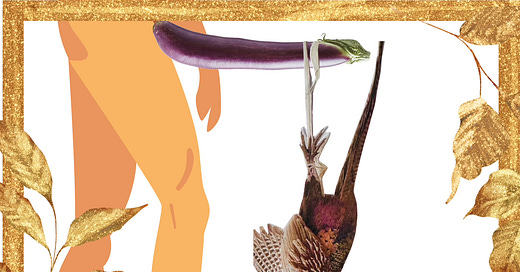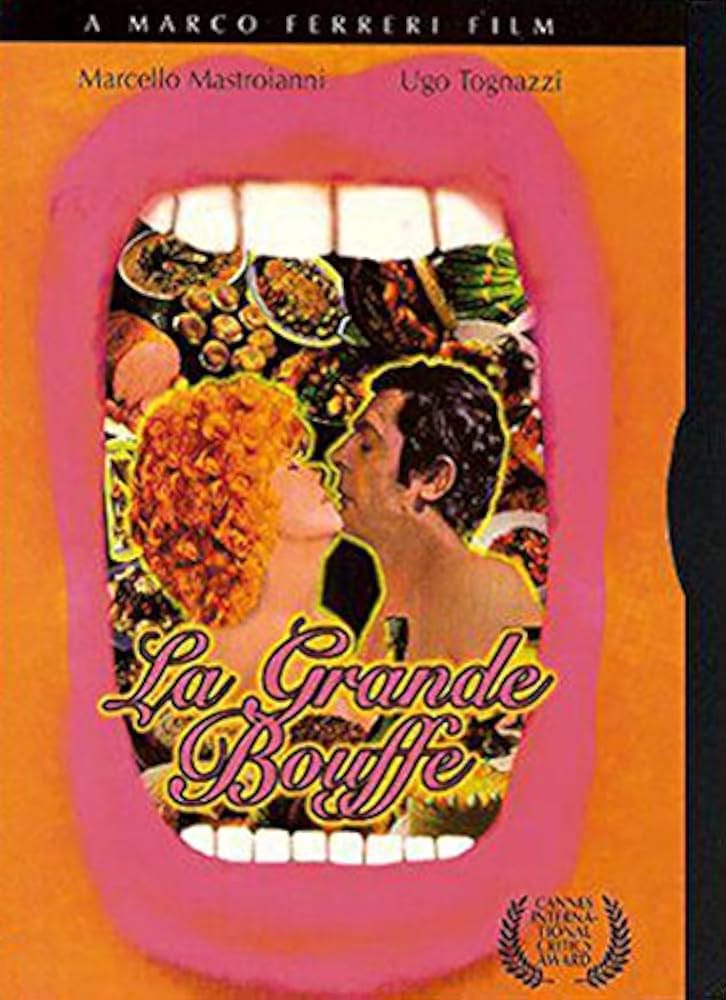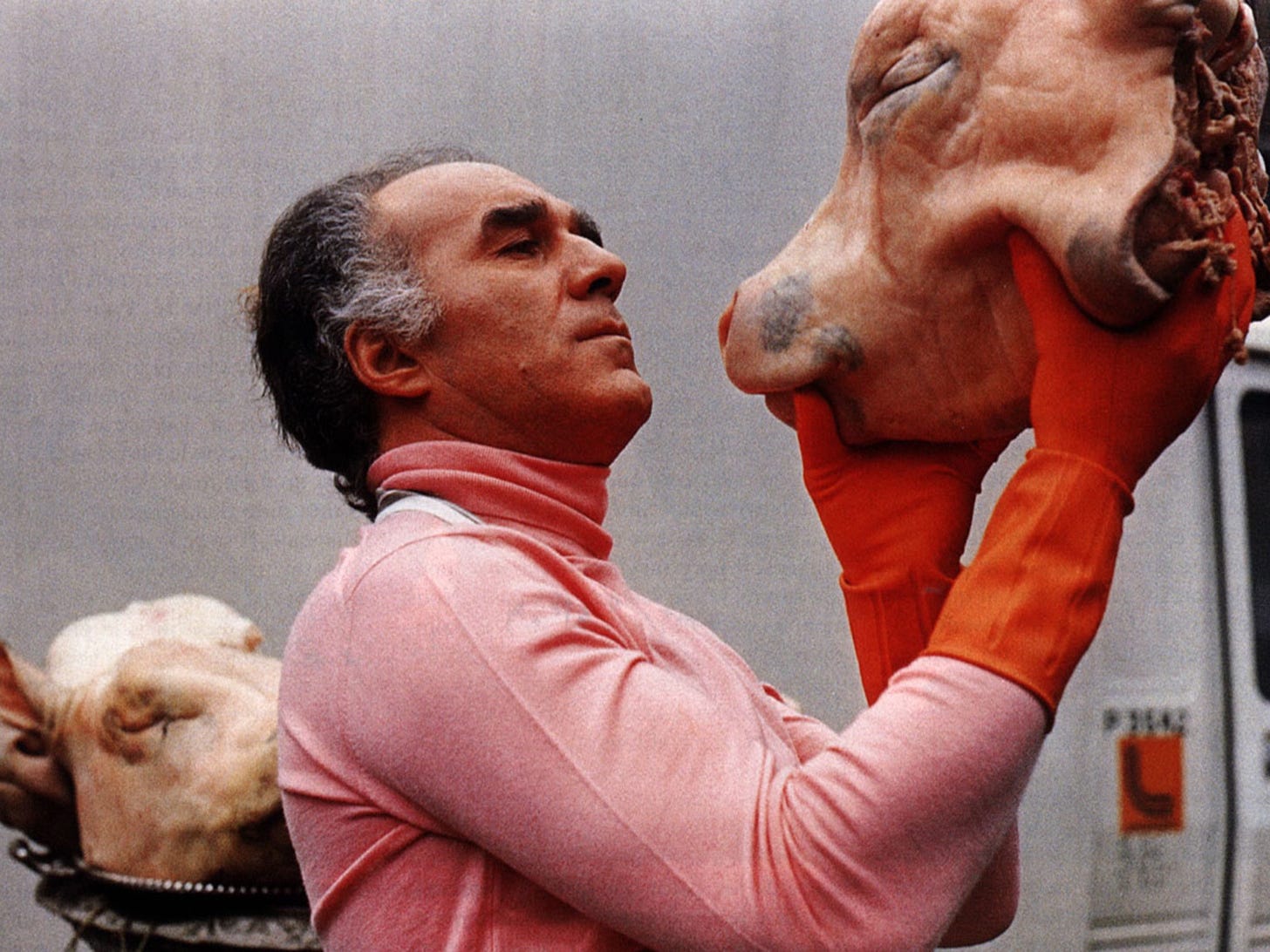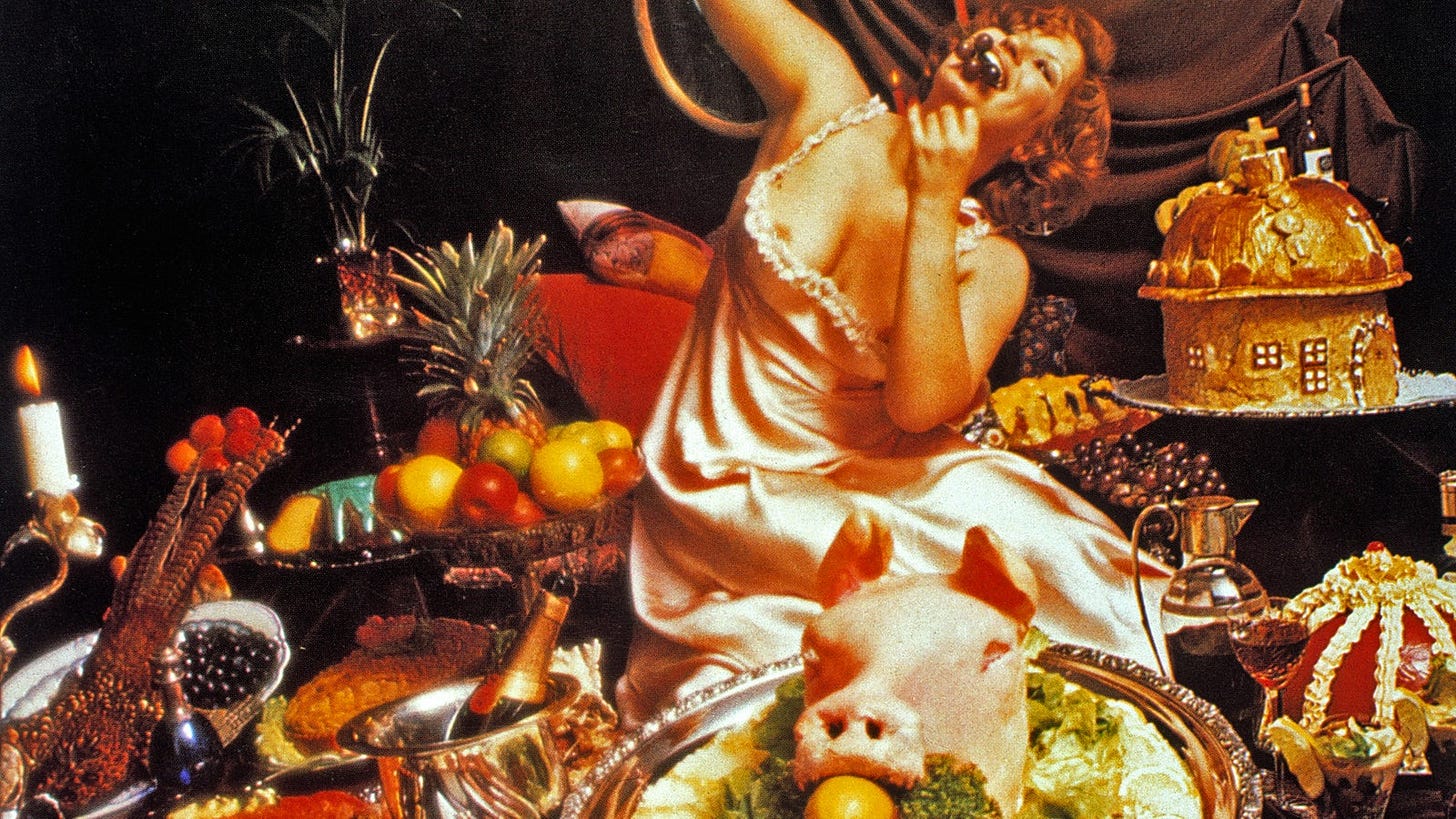“You want to begin with a well-hung pheasant”. Don’t we all.
WAIT - I raise my hand - Let me get this straight: WELL. HUNG. Why is that important? And how do you tell if they’re…y’know, what you just said? “Well-hung meat” (I think she just enjoys saying that) “is tender and better to eat”. So where do I find a well-hung pheasant? (avian bathhouses?) “You don’t find one, you put in the time and effort to make it that way; If it’s not hung, it’s not worth it. You said it, Sister.
It was the first day of our unit on game cookery at the Cordon Bleu. I’d chosen the London campus instead of Paris to avoid a language barrier but now I was mistaking a properly prepared game bird for Long Dong Silver. And we hadn’t even gotten to the part where we learned how to knock up a pie crust. Then someone realized I was American and had probably thought we were talking about something else entirely, which sent me on a tangent into culinary terms that sound a little nasty. Whip the egg whites; Bone the chicken; Prick the crust; beat, roll, toss, truss, devil, cream, blow, suck, ball, rub, rack, hot. How are we to keep our minds out of the gutter and on cooking?
In London, I lived on/in Great Portland Street, in a flat with locks on all the bedrooms. I shared it with another American girl, who’d given up everything to follow a one-night stand to London only to find he had entered a seminary; “CARloath”, the blonde Spaniard from an aristocratic family who’d been cut off when they discovered he was gay, and a guy named John who I’d thought was a photographer until I realized all he shot were birds and animals. He kept his huge can of marmite in the closet with the cleaning products and as far as I could tell, never showered.
Exhibit A: I’d come back to the flat early one Monday morning after a weekend visit with Cousin Arlette in Paris (Where j’avoue I mistakenly ate cereal from the café au lait bowl. I was young and dumb). A quick shower and I’d be off to class to train in some other S & M procedure (Bone! Prick! Beat!). But when I opened the door of our tiny triangular shower I found a dead pheasant strung up by its heels to the shower head, dripping bodily fluid onto the shower floor, ploppety ploppety PLOP. John had been out shooting. Not photos.
That day we learned how to knock up a pie crust.
So why is the hanging of the bird so important? A nice fat, wild pheasant, worthy of losing his life in service to a confit (legs) and roast (breast) is several months old and he’s been flapping around developing muscle - and thus, flavor - all that time. Hanging a bird is like aging beef; it allows the muscle fibers to relax and break down, making the meat more tender. And, it develops a more complex gamey flavor. If you buy farmed pheasant it will likely be younger and won’t have gotten much exercize so its meat will already be tender and its flesh mild. Like humans. We get more interesting as we age. I mean, would you rather have a Coke and half a dozen wings with a teenager or a wine-soaked meal with a woman who’s lived a little?
Read about how to hang your own pheasant from Hank Shaw of To The Bone. D’Artagnan and Ottomanelli in New York City sell best-quality, fresh pheasants. Or find a friend who shoots.
Some years ago my friend, the extraordinary photographer Hans Gissinger, got a hankering to recreate a scene from the 1973 movie La Grande Bouffe with Ugo Tognazzi and Marcello Mastroianni. Have you seen it? You should. Like, NOW.
We would need a brace of pheasants, a pig and a red-headed hooker. The hooker and the pig were easy.
At the time, Hans lived in a large compound in Upstate New York with a print shop, photo studio, wood burning ovens, walk-in refrigerators and potager, or kitchen garden. Photo shoots at his house meant a sit-down lunch prepared by his cook, with produce from his potager. Afterward, the Misty Mountain Car Service would drive you back to the city. This time, it would be a house party, with photo assistants, stylists, groomers, set designers and our Russian hooker model, all camping out at the compound.
The day of our shoot, I drove a pig up from Chinatown in the Misty Mountain car and Hans got a neighbor to shoot us a couple of pheasants. The troops arrived and started to prep: Silky vintage nighties were unpacked, a huge silver platter for the pig, champagne buckets, candelabra, firewood and cases of fat grapes, strobe lights, c-stands, softboxes and a ten foot tall ladder for detail shots caught from above.
Hours later, all was cooked, plated, groomed, styled, set, lit and in place; Hans climbed the ladder and peered through his Hasselblad at the tableau. “I am not feelink it” he said in his Swiss accent, “let’s chust party”. He got on the phone and invited his friend Marcel, a frenchman who excelled in drinking and setting his farts on fire, a hippie couple who arrived with an apple pie made from 22 varieties of apples they grew right next to their marijuana, and the ex-husband of the wardrobe stylist, an Aussie who lived semi-nearby. At one point, the Aussie and the hooker model went for a hike, got lost, then came back hours later, barefoot and torn UP. Turns out she kept telling him she saw bears which in her Russian accent sounded like “beers”, and thinking she’d spotted a liquor store, he led them around in circles until there was nothing left to do but have sex by the creek and wait for daybreak to find their way back to the compound. By the end of the festivities, there was little left but Marcel and the two pheasants, which I hung in the walk-in fridge and Hans cooked days later.
If you find yourself with a wild, well-hung pheasant, separate the legs from the breast, roast the breast like you would chicken, and confit the legs. Here’s how:
Well-Hung Pheasant Confit
First check for buckshot: Follow any entry wounds into the flesh and you should find it. Remove with tweezers and discard. Now make a dry rub with:
1 Tbsp. kosher salt
2 tsp. freshly ground white or black pepper
1 tsp. ground allspice
2 tsp. dried thyme
Combine and massage into all surfaces of the legs. Place on a rack over a tray in the fridge for a good 24 hours.
After this, rub off the dry rub with a damp towel, or quickly rinse in cold water and pat dry.
In a small, heavy pot or deep cast iron skillet just large enough to hold them, place the legs, 4 shallots, halved, and 2 cloves garlic. Add enough duck fat, lard, chicken fat, olive oil or a combination of these to completely submerge the legs. Warm over medium heat until the fat melts and shimmers; DO NOT BOIL. Now cover and place in a 250˚ oven for 4-5 hours. Then test the meat with a fork; it should submit easily.
Remove the pot from the oven and let cool completely. Keep covered and chilled for at least a few days (and up to a few months) to allow the flavors to deepen. When you’re ready to serve, roast some small potatoes in some of the fat. Meanwhile, gently remove the legs from the pot and sear both sides in a medium hot skillet in the fat clinging to them until the skin crisps. Chew carefully, or remove the meat from the bone and pull it apart a bit, in case a BB or two remain.
I like it with chunky, tart stewed applesauce that I cook with crushed coriander seeds, and a small glass of semi-secco marsala to wash it all down. Message me if you’d like the recipe for the applesauce.
photograph: Hans Gissinger











This made my morning Victoria 😆 "How are we to keep our minds out of the gutter and on cooking?"